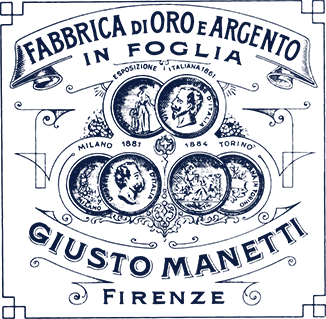1500: The origins of the family
The story of the company that has gone on to become the world’s leading producers of gold and silver leaf coincides with that of a large Florentine family who, as far back as the Renaissance, practised the ancient and noble art of gold beating, the allure of which had even won over Leonardo da Vinci.

The first mention of the Manetti family dates back to the late fifteenth century. The family’s progenitor, Matteo, lived in the village of Quinto, in the Florentine countryside, with his sons Antonio and Agostino. The town was governed by the Medici, and was undergoing a period of considerable economic and cultural growth: while Florentine bankers and merchants were making their fortunes throughout Europe, Raffaello Sanzio, Leonardo da Vinci, and Michelangelo Buonarroti were working in the city, and the workshops of new artists and artisans were flourishing all around. Including that of the Manetti family. From the very beginning their name was associated with gold beating: a trade that was so vital to the city’s production needs that it drew the attention of some of the greatest minds of the era.
Even Leonardo da Vinci himself became fascinated by the miracle of transforming gold into gold leaf, and with the aim of improving the artisans’ working conditions and increasing their workshops’ productivity, the great artist dedicated one of his most extraordinary inventions to the trade of gold beating: a machine capable of reducing the precious metal’s thickness from 500 to 30 microns. In 2019, five hundred years after his death, it was precisely the Manetti family that rebuilt the first working model of that masterpiece of mechanical engineering.
The chronicles from the end of the sixteenth century even allow us to reconstruct the events surrounding the first member of the Manetti family to have accomplished major achievements in his trade. This was Matteo, the son of Agostino, who historians regard as one of the best Italian goldsmiths of the time. After undergoing a period of training in Florence, at the famous workshop of Francesco di Jacopo da Empoli, Matteo moved to Rome, where, at the time, St. Peter’s Basilica was a gigantic open construction site teeming with painters, gilders, sculptors, engineers and architects. Here he worked together with Battino Bologna to create the golden ball that completes the dome on St. Peter’s Basilica, designed by Michelangelo.




